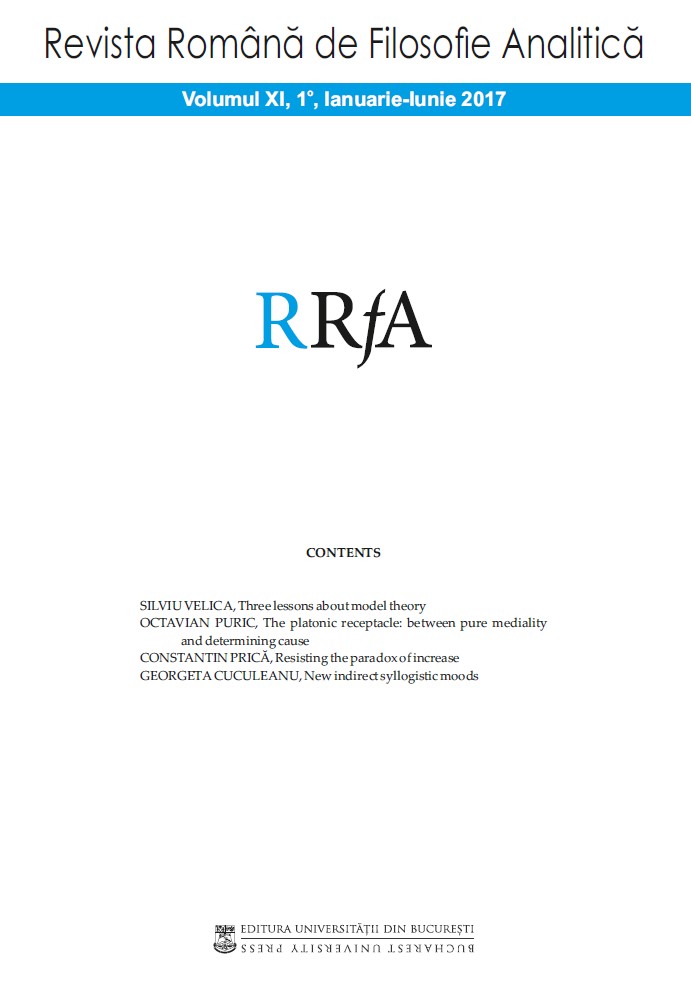The platonic receptacle: between pure mediality and
determining cause
The platonic receptacle: between pure mediality and
determining cause
Author(s): Octavian PuricSubject(s): Analytic Philosophy
Published by: Editura Universităţii din Bucureşti
Keywords: image-model; particular-form; receptacle; participation; approximation; unqualified; medial aspect;formal aspect;
Summary/Abstract: In this paper I will try to answer two different questions that stem from Plato’s characterization of the Receptacle in the Timaeus. The first originates from the description of the Receptacle as a ‚characterless sort of thing‛ (50e5-6, 51a5) that‚ receives all things‛ (51b) without showing its own face‛ (50e4). This lets one assume that whatever character the Receptacle will receive from the Forms, the resulting image will have that exact character and will in turn be an accurate depiction of its Form. Yet, this conflicts with the fact that Plato describes Forms and particulars in strikingly contrasting manners. Thus, the first question will be: What accounts for the differences in character between Form and particular in light of the Receptacles’ pure receptivity? The second question asks as to the nature of the common character that binds the image to its Form: If the image and its model are differentiated by opposing characteristics, what is the common aspect in which an image resembles its model, making it of one particular model rather than of another? Before tackling these questions, I will first review three of the more influential interpretations of the nature of Forms and particulars in the following order: The Approximation View, the Unqualified Exemplar interpretation, and the Model-Image view. I will side with the latter, arguing that it provides the most satisfactory account of Plato’s thought. Placing my approach in the theoretical framework of the Model-Image view I will argue that the first question can be solved in the following way. First, I will maintain that the Receptacle need not be characterless in all respects, but only in those in which it is to receive the characters of the Forms. Secondly, I propose that the image has two inherent types of determining sources, a) the formal determination that comes from its model, and b) the medial determination that stems from the medium to which it belongs. I will argue that it is due to the medial determination of the Receptacle that the image has all the contrary properties that oppose it to the Form. Regarding the second question, I will maintain that as it stands at a moment, the Model-Image theory cannot provide a satisfactory account.
Journal: Revista Română de Filosofie Analitică
- Issue Year: 11/2017
- Issue No: 1
- Page Range: 20-49
- Page Count: 29
- Language: English

